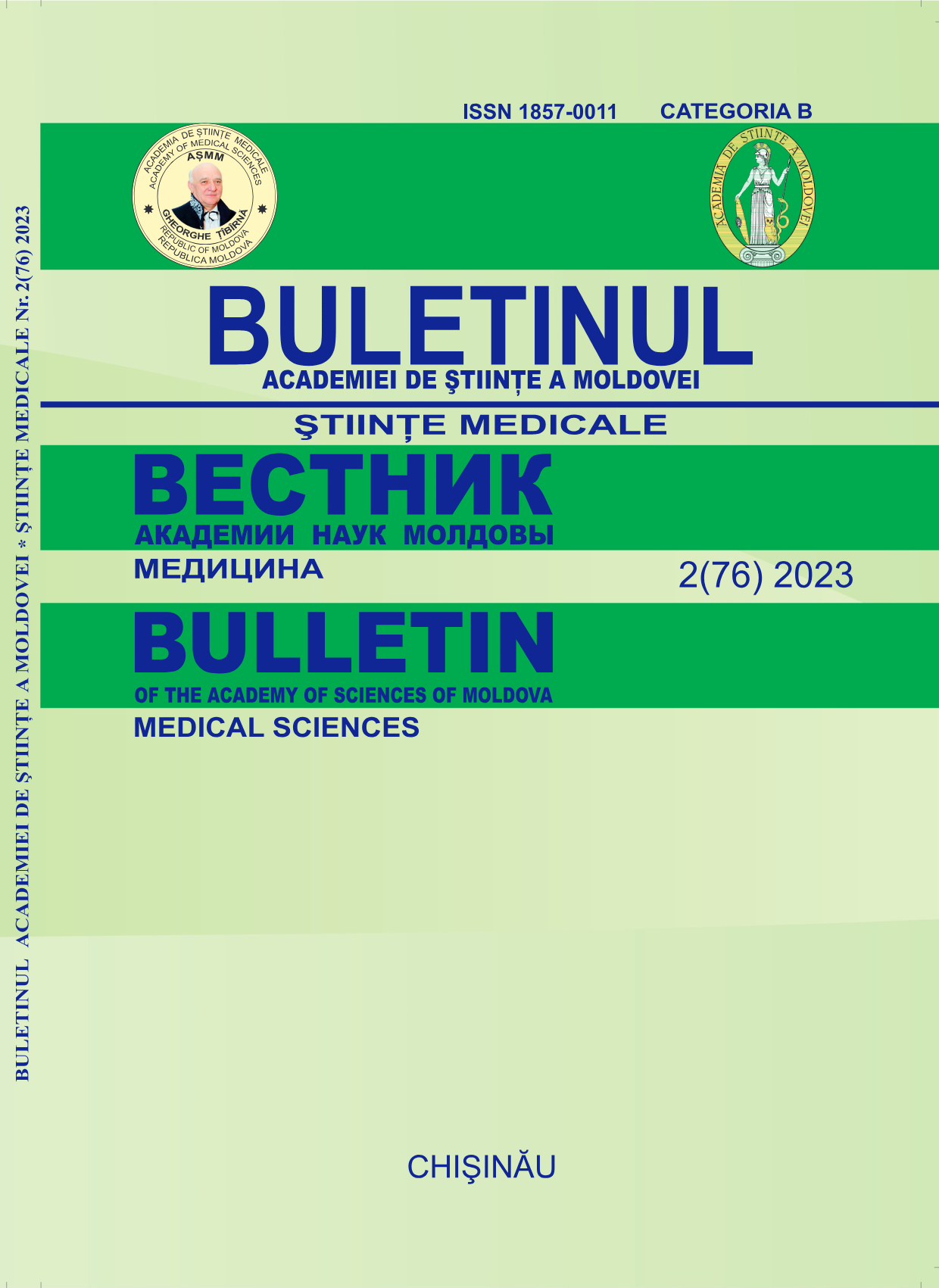Acute myelomonoblastic leukemia in children, the particularities of extramedullary infiltration based on a clinical case
DOI:
https://doi.org/10.52692/1857-0011.2023.2-76.15Keywords:
extramedullary infiltration, acute myelomonoblastic leukemiaAbstract
Introduction: Childhood acute myeloidleukemia (AML) represents approximately 5% of childhood malignancies and 15% to 25% of pediatric acute leukemia. The extramedullary manifestation of infiltrating clonal blast populations in a variety of organs and tissues in acute myeloid leukemia (AML) is defined as a distinct entity in the 2016 WHO classification of myeloid neoplasms, myeloid sarcoma The rate of complete remission after induction chemotherapy was lower in patients with extramedullary infiltration, overall survival and event-free survival were not different between patients with and without extramedullary infiltration. Purpose of the study: Presentation of a clinical case of ALM type M4 with the presence of an extramedullary infiltrate in the tissue of the central nervous system in children. Materials and methods: The clinical, paraclinical, imaging data of the patient were studied in parallel with the specialized literature on similar cases. Results: Boy, 5 years old, goes to the doctor with accusations of bilateral palpebral edema, bilateral temporal region edema and bilateral exophthalmos , more pronounced on the left. In the general analysis of the blood: - Hemoglobin - 89 g/l , Leukocytes - 7.2 x 10^9/l; unsegmented neutrophil - 1%; segmented - 18%; lymphocytes - 44%; monocytes - 20%; blast cells - 16%; Platelets - 70 x 10^9/l;VSH - 44 mm/h. During the physical examination: the peripheral lymph nodes are palpable. No signs of central nervous system damage. It is supposed the diagnosis: Acute myeloid leukemia, sarcoma, or neuroblastoma. A medullary puncture: moderately cellular marrow was determined, with blastcells 15.2%. Morphologically, it is more similar to acute myelo-monoblastic leukemia FAB-M4. Computerized Tomography-multiple, hyperdense pathological foci, with localization with inand bilateral extraorbital, associated with exophthalmos. The formation from the sphenoid sinus extends to the nasopharynx , through the pterygopalatine fossa, with narrowing of the lumen and mass effect on the palatine tonsils. Immunophenotyping: CD45-/+ SS low 8% population, CD36+ 6%CD64+ monoblasts 8%, Promonocytes /monocytes – (CD64+/CD14+) 25%.He underwent treatment according to the AML BFM 2004 program with numerous complications, andcranial radiotherapy. At the moment, the child is in morphological remission. Conclusions. The differential diagnosis of hyperdense intracranial masses may include neuroblastoma, meningioma, lymphoma, metastases, or sarcomas. Correct and early diagnosis and initiation of specific treatment are essential to increase the survival rate in cases of acute leukemia in children.
References
Kim EH, Im SA, Lee JW, Kim S, Cho B. Extramedullary Infiltration in Pediatric Acute Myeloid Leukemia on Surveillance Magnetic Resonance Imaging and its Relationship With Established Risk Factors. J Pediatr Hematol Oncol. 2022 Apr 1;44(3):e713-e718. doi: 10.1097/MPH.0000000000002353. PMID: 35319510; PMCID: PMC8946590.
Eckardt, JN., Stölzel, F., Kunadt, D. et al. Molecular profiling and clinical implications of patients with acute myeloid leukemia and extramedullary manifestations. J Hematol Oncol 15, 60 (2022). https://doi.org/10.1186/s13045-022-01267-7
Hu G., Lu A., Jia Y., Zuo Y., Wu J., & Zhang L. Prognostic Impact of Extramedullary Infiltration in Pediatric Low-risk Acute Myeloid Leukemia: A Retrospective Single-center Study Over 10 Years. Clinical Lymphoma Myelomaand Leukemia, 2020, 20 (11), e813–e820. https://doi.org/https://doi.org/10.1016/j.clml.2020.06.009
Elgarten CW, Aplenc R. Pediatric acute myeloid leukemia: updates on biology, risk stratification, and therapy. Curr Opin Pediatr. 2020; 32(1) :57-66. doi: 10.1097/MOP.0000000000000855. PMID: 31815781.
Kobayashi R., Tawa, A., Hanada, R., Horibe, K., Tsuchida, M., & Tsukimoto, I. (2007). Extramedullary infiltration at diagnosis and prognosis in children with acute myelogenous leukemia. Pediatric Blood & Cancer, 48, 393–398. https://doi.org/10.1002/pbc.20824
Downloads
Published
License
Copyright (c) 2023 Bulletin of the Academy of Sciences of Moldova. Medical Sciences

This work is licensed under a Creative Commons Attribution 4.0 International License.



